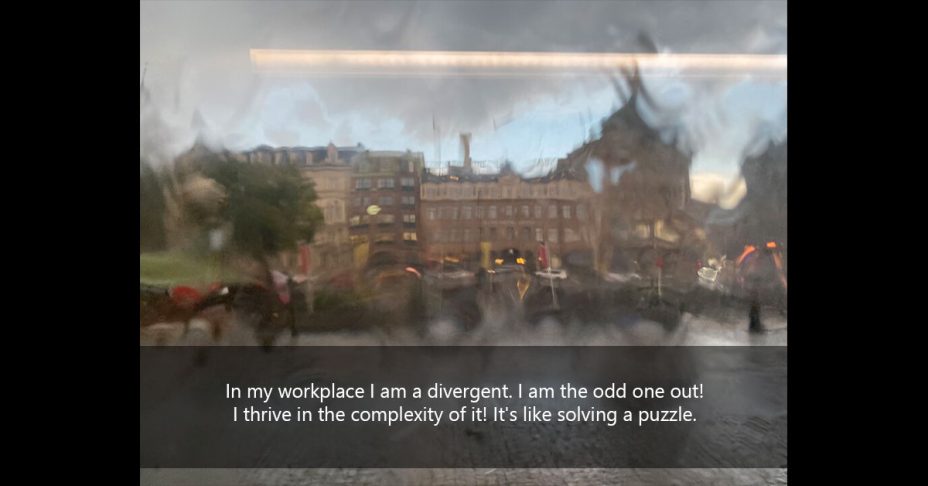Developing organizations with strategic IT thinking
A short prosaic glimpse into working with strategic IT within the public sector
In my professional role, working within a municipality in southern Sweden, I am a member of the management team at the public department of Social Services. As a part of the strategic staff I report directly to the head of Social Services. The other members are experts within their respective fields. Our group’s joint core delivery focus is to provide our citizens with legally based social services. The members are very different from each other, and we bring different things to the table. My addition to the team and what makes me stand out, is my background as an IT expert and IT manager with over 20 years of experience from the private IT sector, in which I’ve covered a variety of areas ranging from production business to software development and to operations. I’ve also worked within the consultancy sector and with customer service. And here in the public sector I’m about to reach the major milestone of seeing my first term of office come to an end (a political event recurring every four years in Sweden).
So, while my team mates make sure that the elderly, the young and the people who are entitled to our services get them on a daily basis, my main focus is to make sure the organization develops in a way where ongoing digital transformation works for the company, not against it (as is sadly very often the norm) – and this in a robust, but still dynamic and flexible way.
In my workplace I am a divergent. I am the odd one out, an outsider if you so please. I don’t have many peers within the municipality (the sector needs more of us, come join!). This puts particular demands on my abilities to endure, withstand, explain, visualize, listen, adapt and connecting dots to make things understandable. I relentlessly must keep working on changing the IT awareness in an environment where the understanding of what I do at times is limited (or close to none – no offense intended), and sometimes even unwanted. This is of course challenging, but it is also very rewarding. I thrive in the complexity of it!
Make no mistake… it is hard work. And some might think I am crazy for doing it. But I’ve been at it for a long time, it’s what I do… it’s what I’m trained for. And for me it’s also at the core of who I am. I strive to find solutions, to educate (and learn) and I do not give up easily. I have an urge to make things better. And change is tough. However, transformation is necessary. And for me, it’s like solving a puzzle.
The thing is, that we need to standardize, to systemize, and to drive our business with data in the most efficient way. And we need to make sure we are secure whilst doing it. And we must strive to know what we are doing and how we use the data, and when… and where…
We need to keep track of what we have already done, what we have already put into play. In my guild we call this balancing development and operations. Organizations need to be smarter. And they need to be calmer. They need to be robust and able to withstand constant change without even the slightest hiccup in delivery speed or quality. They need to be more thought through and its key personnel need to understand more – specifically about what makes IT tick. But we are not really there yet… hence each of us must broaden our horizons and we must adapt to this constant changing and the constant learning that is a solid part of the times we live in. My guild call it agile thinking. And this is what I do.
So, on a daily basis I continuously aim to explain what IT is, how IT should be used and not least, how IT must be maintained. I often find myself exploring the numerous implemented, but unused, IT solutions that litter the organization and its departments, and I dare to ask the uncomfortable questions;
Why did we build this? For whom? When? What about its lifecycle? How do we maintain its usage? How does it fit into the bigger picture? Where does it fit into the portfolio? What does it cost? Do we have SLA and support routines in place if something goes awry?
…and sometimes even questions like;
Who even remembers what this is? Why aren’t we using it? Have we ever used it or did we only build it to build it?
I sort things and I put them into categories. My guild calls it mapping out capabilities. And this is also what I do.
In my role, I often challenge the status quo and I put strategic and tactical IT onto the agenda. I am not always the most popular in a meeting or a group since I “tend to complicate things”, but when push comes to shove, I’m more often than not invited to help out, to try to correct the wrongs and to broaden the picture. I work with changing mindsets in regards to the do’s and don’ts within the IT area, and to develop basic IT skills throughout the organization. I act as a coach and mentor and put lots of effort into sharing my experience.
As you might understand, I more often than not, work in strong headwind, when explaining the complexity of Strategic IT and pushing the necessity of a documented high level architectural landscape, which I call “The Blueprint” (some might refer to it as value streams and others call it processes). I often find myself being pushed to the fence by people just starting to realize that we might need to start focusing more on “her area”, but not yet having fully accepted that this means that adjustments must be done, that we need to do things in a different way, and that changes must be enforced for it to happen. Being in an old organization, which is quite set in its ways, is interesting and frustrating at the same time. But I have my seatbelt on, and stay firmly focused on my field of expertise. What needs to be done must be done and will be done, even if it’s slow going! And I have patience.
So, in summary my job is to enable a business driven, robust IT Services landscape in any way I can. Sometimes it’s by identifying capabilities and drawing architectural maps, but, at this very moment it’s more often advocating for the Why, What and How regarding IT, strategically and tactically.
My whole focus is creating an IT foundation that can handle fast paced development.
…which is a must in this, the 21st century.
Luckily for me, this is my calling (professionally that is).
//Cat
Tip! If you want to give this sort of job a go, make sure you have your boss in your ring corner. It’s the only way to do this job without going insane… 🙂
Developing organizations with strategic IT thinking
Copyright © Art of Coping® All Rights Reserved.
Satirisk text som gör upp med påståendet att extrovert är bättre än introvert


